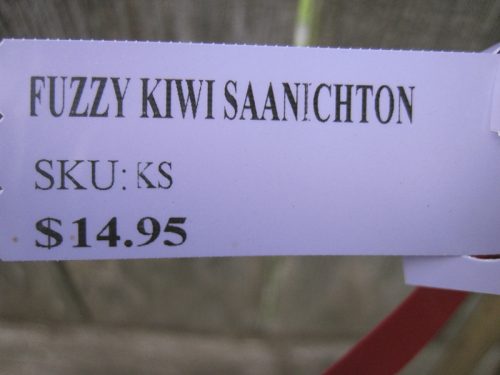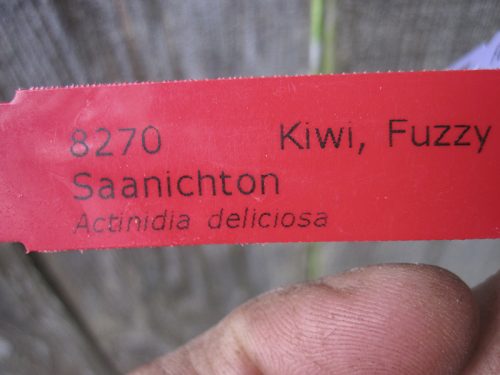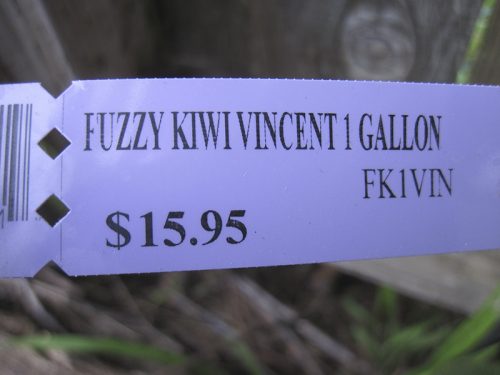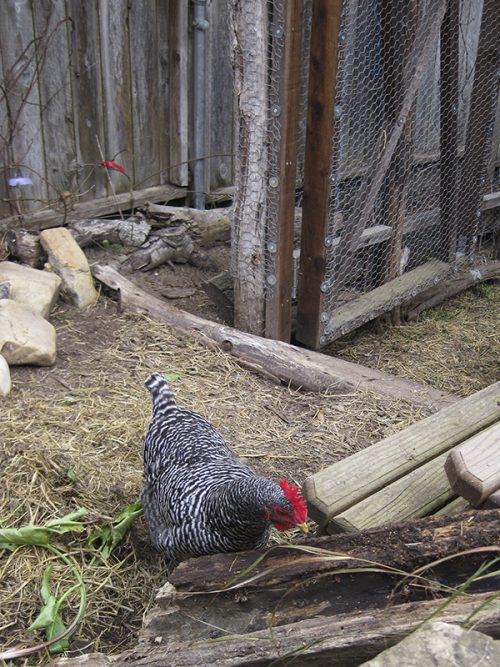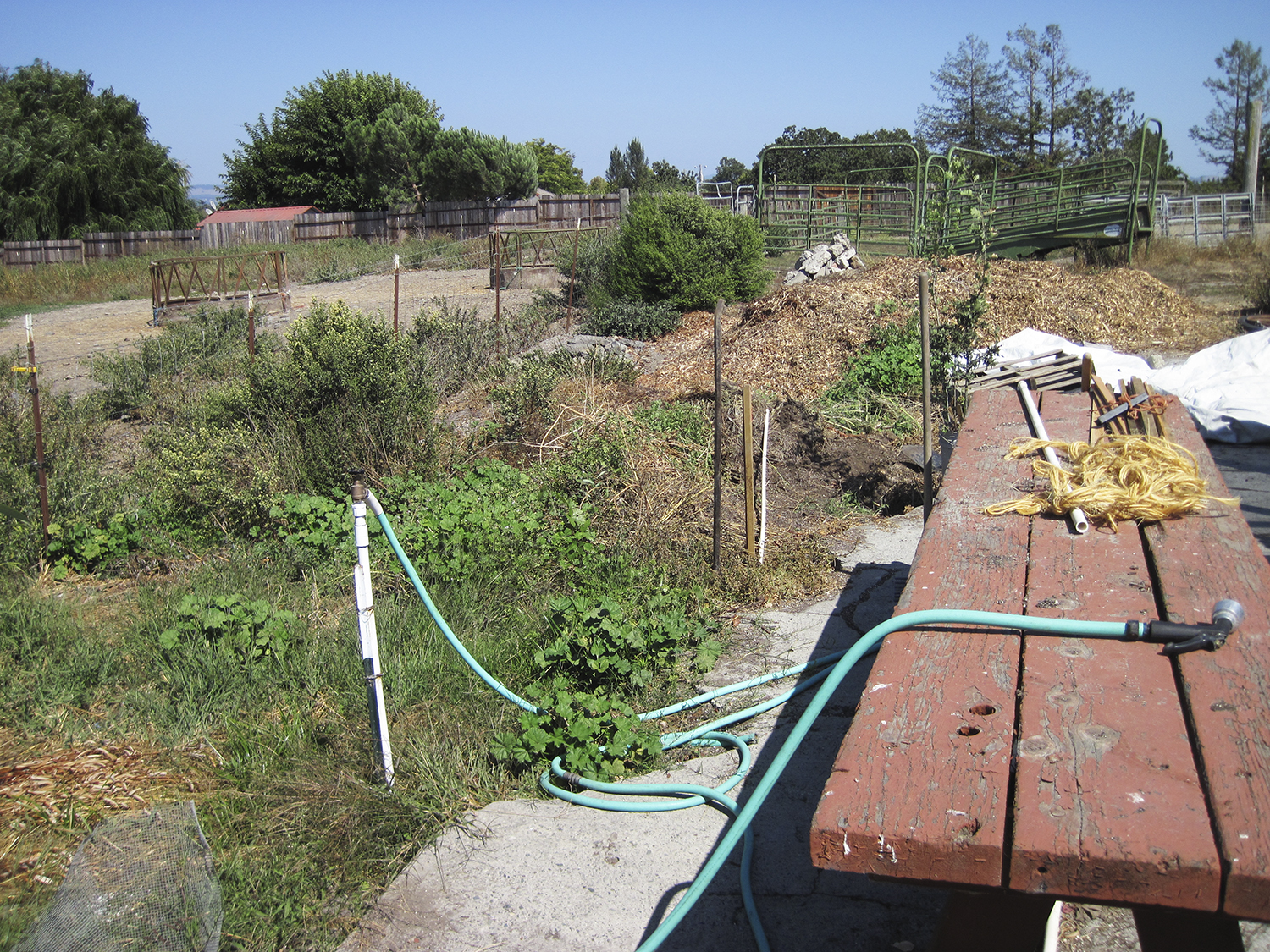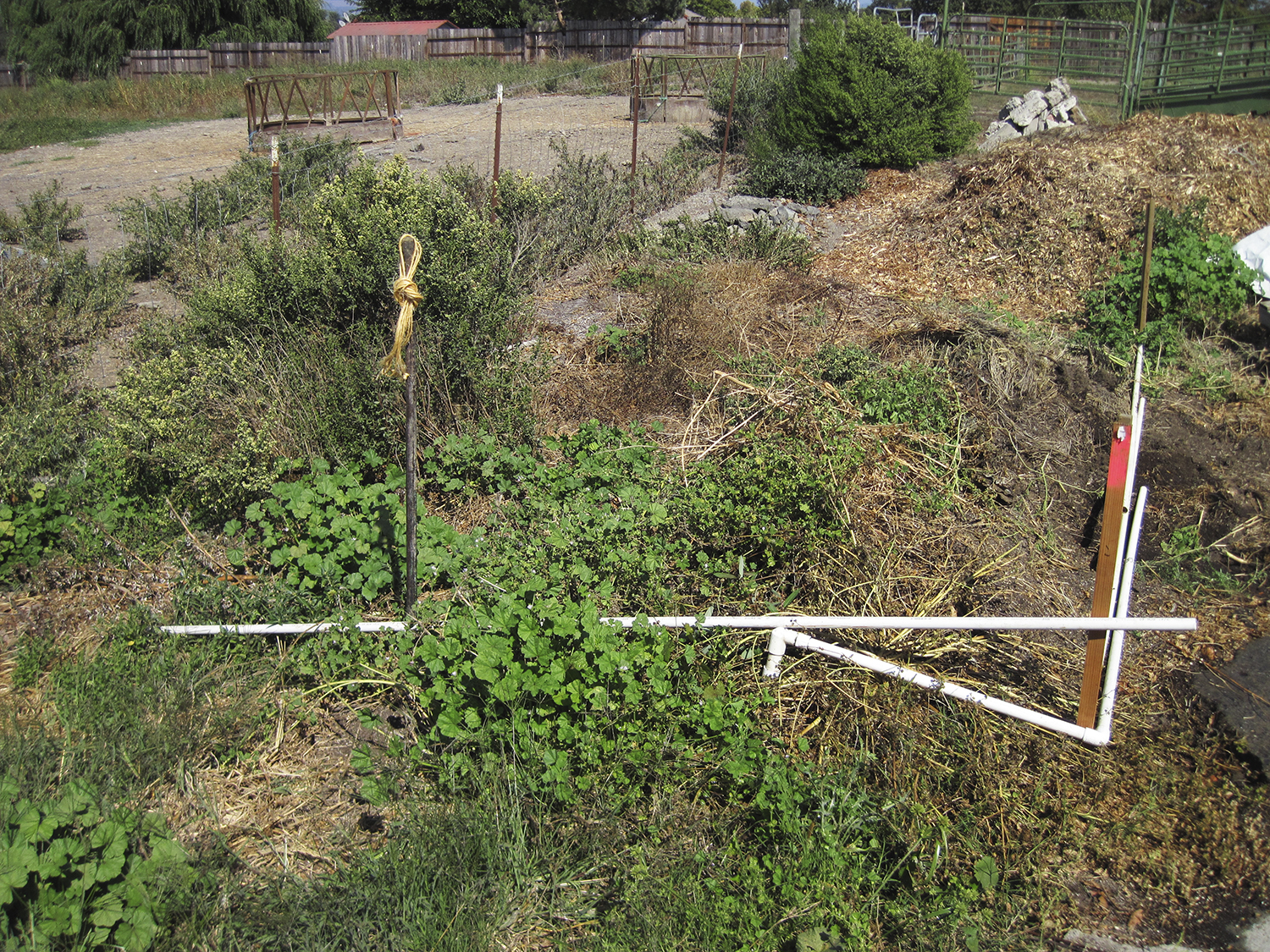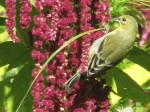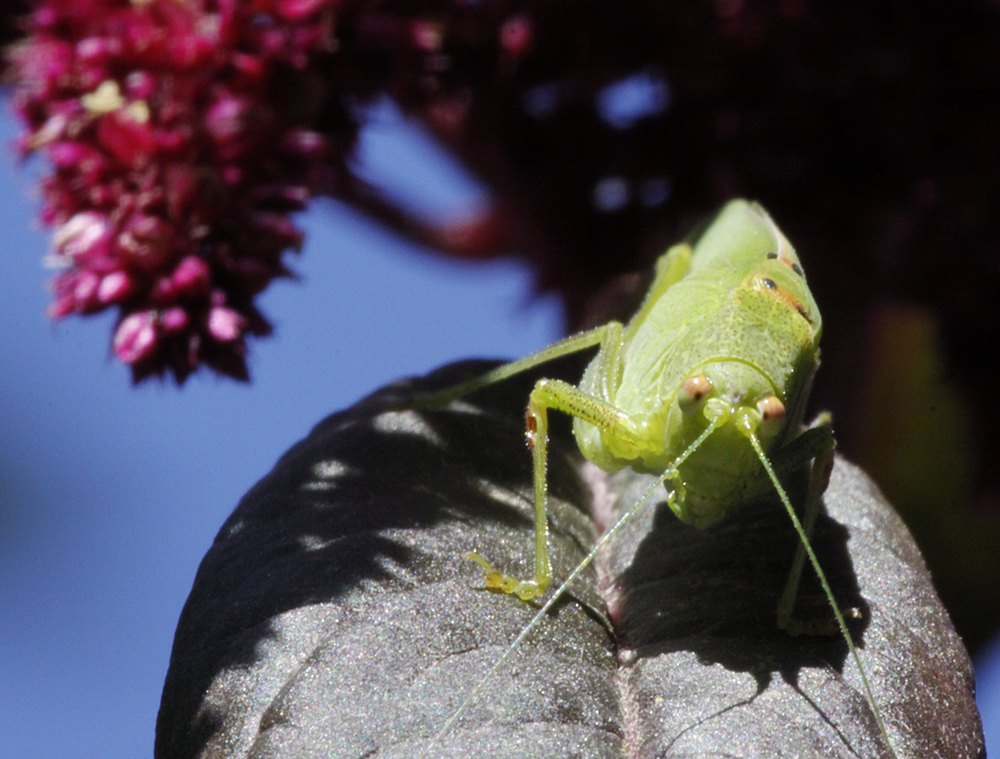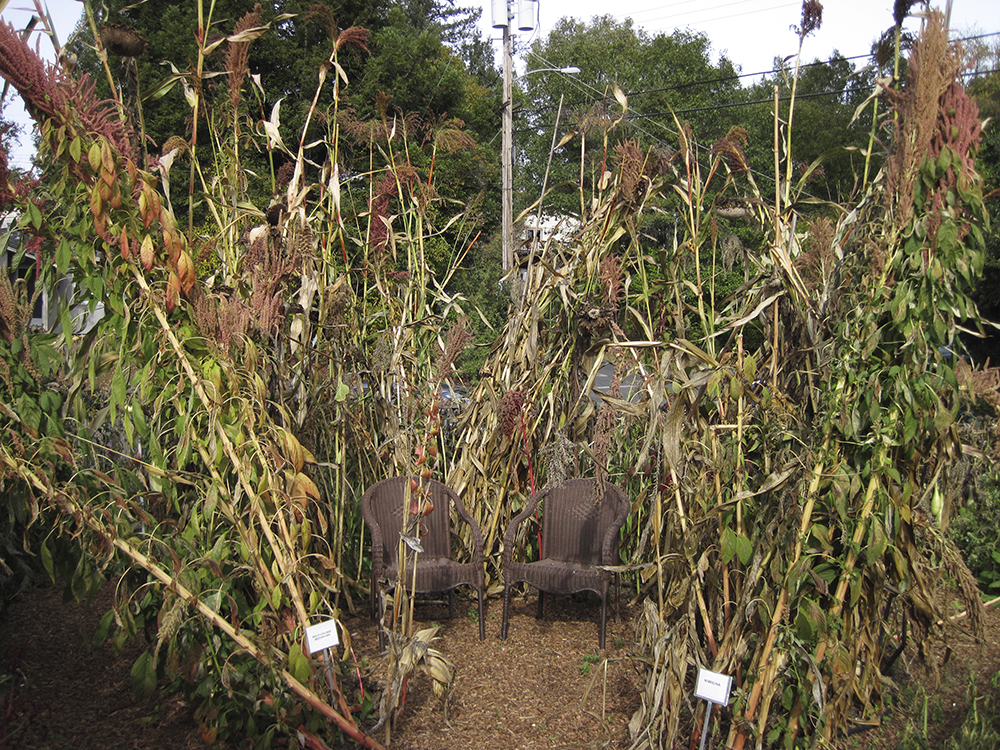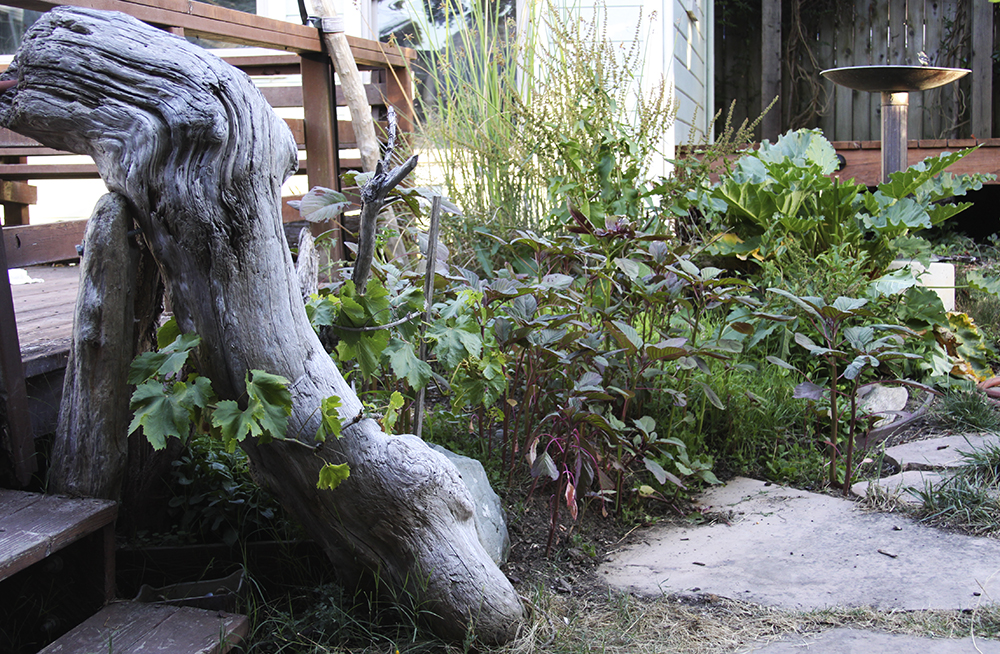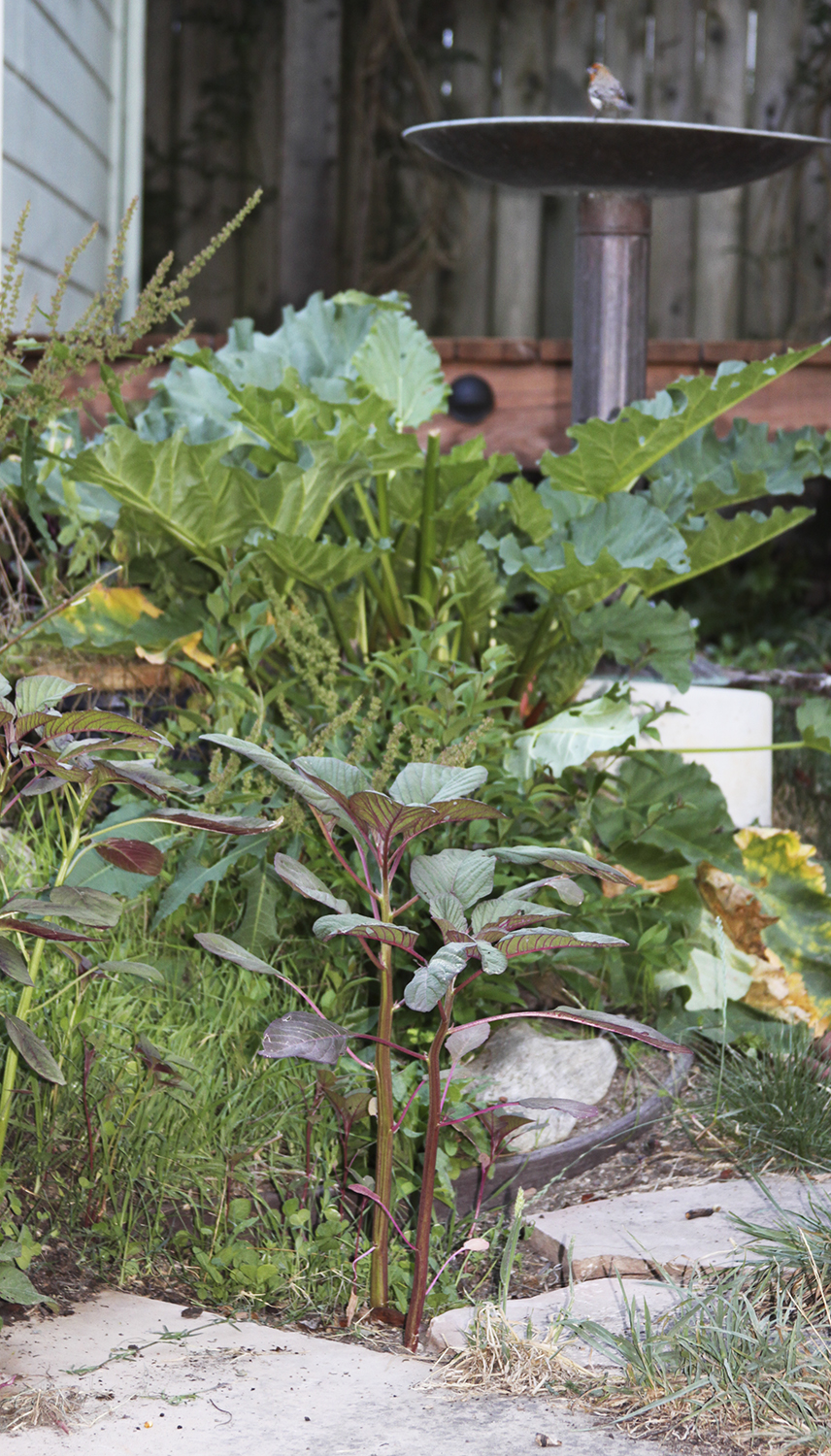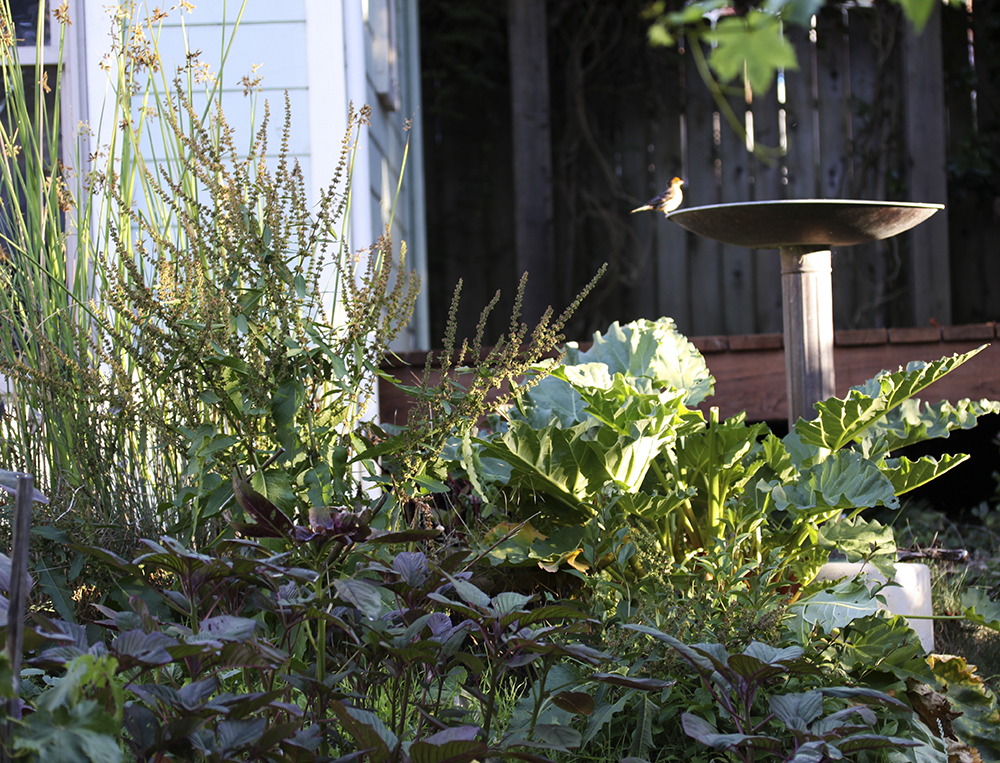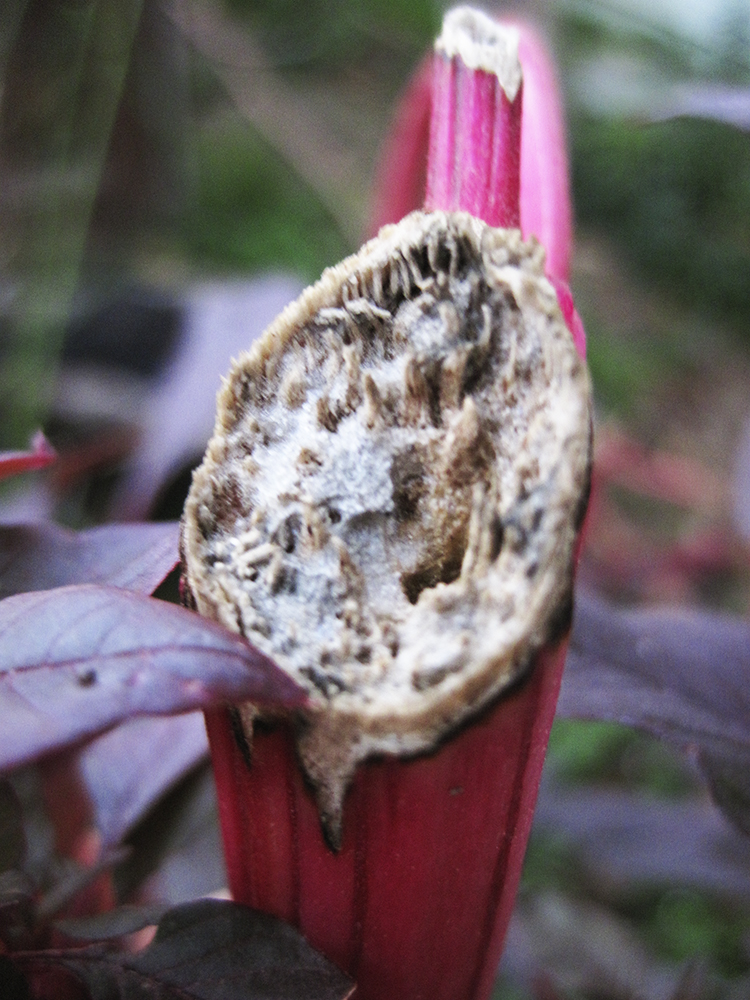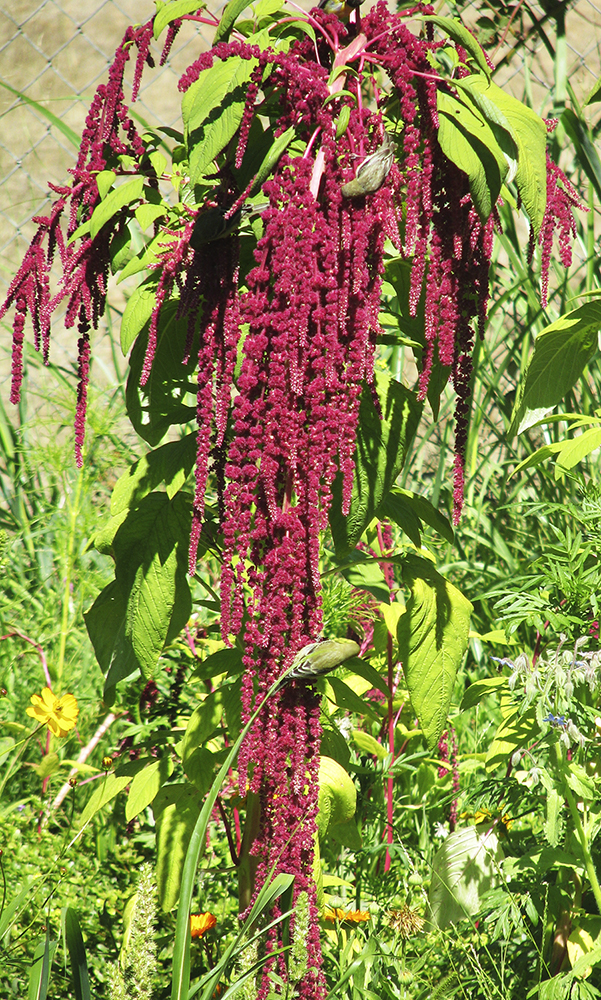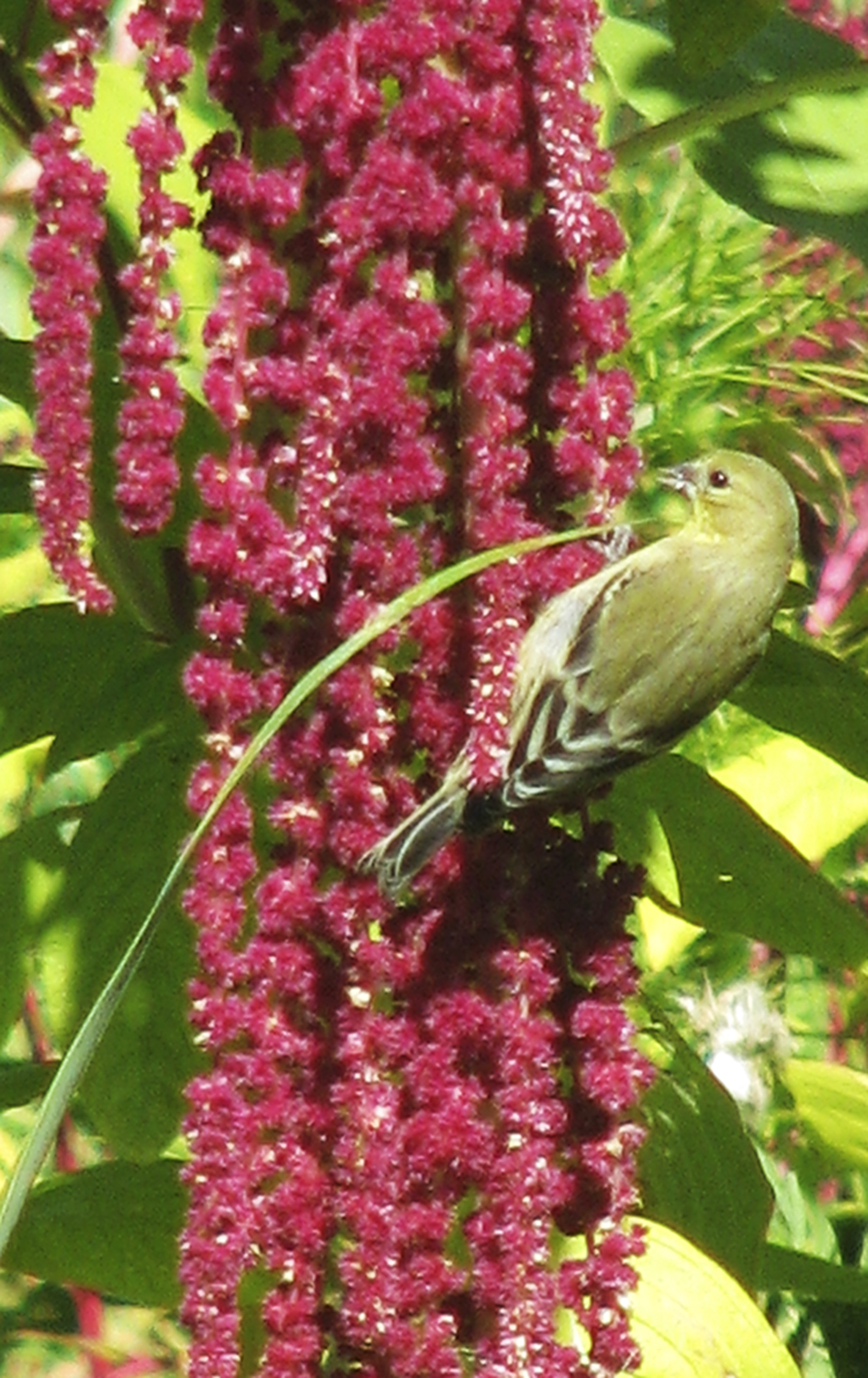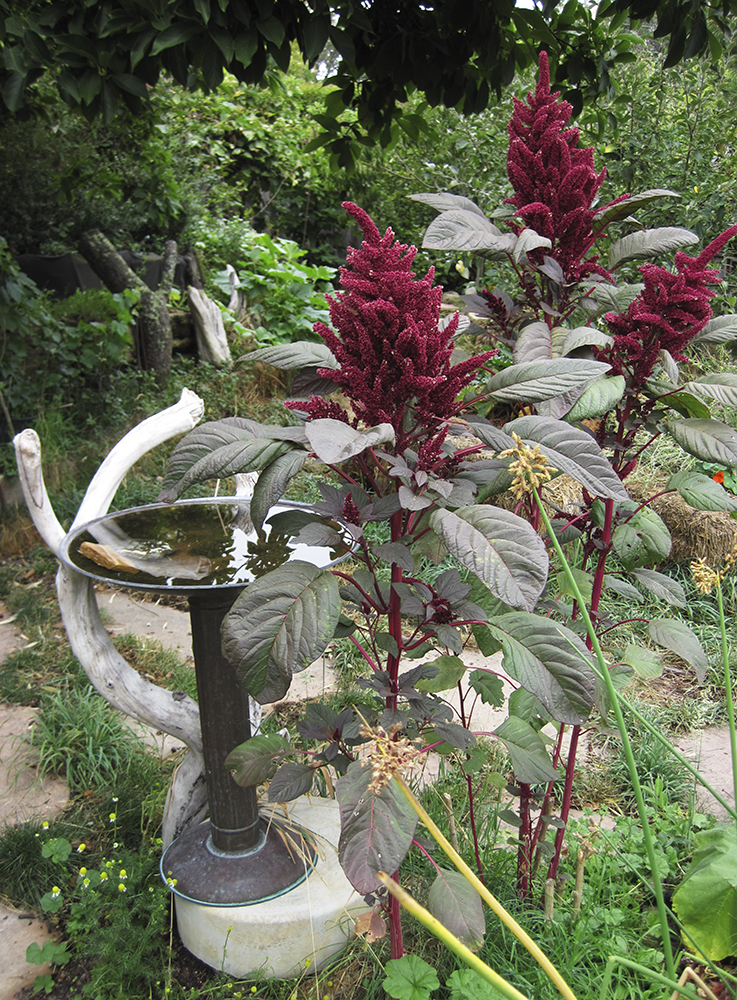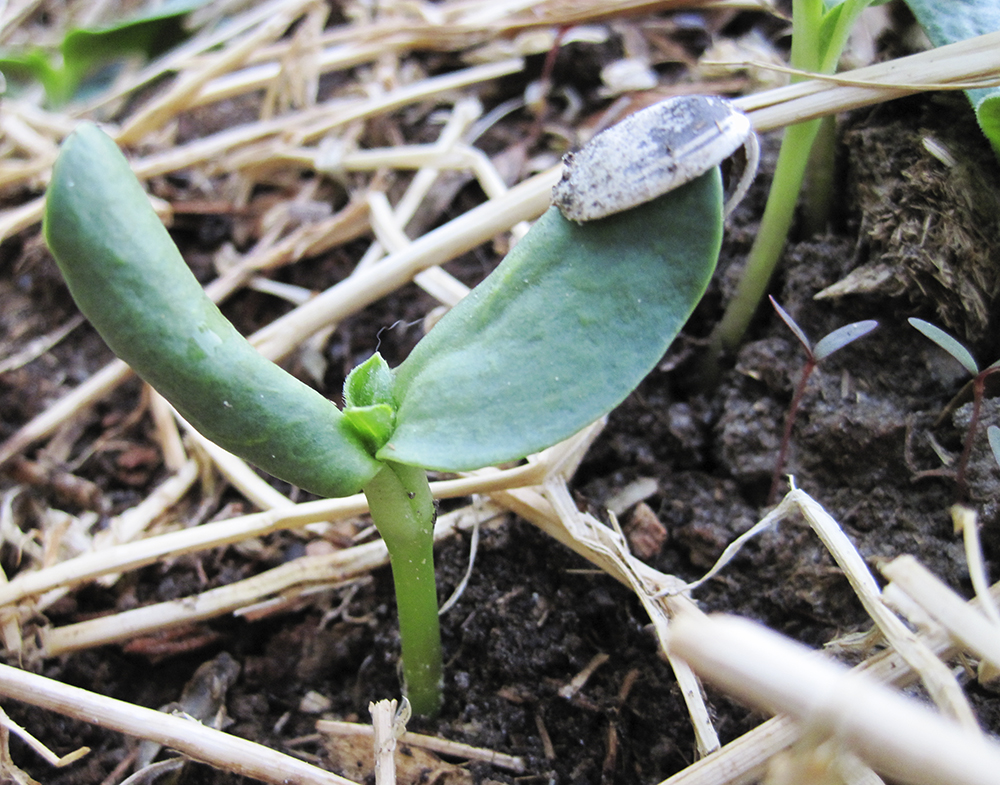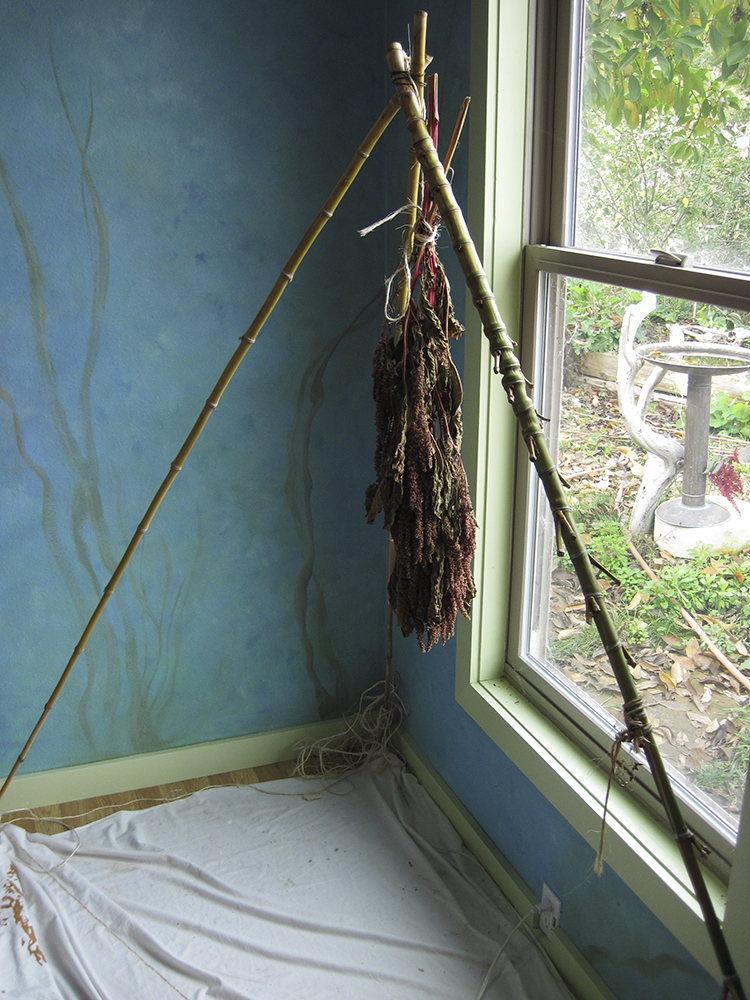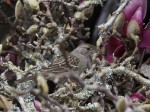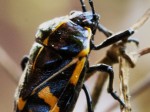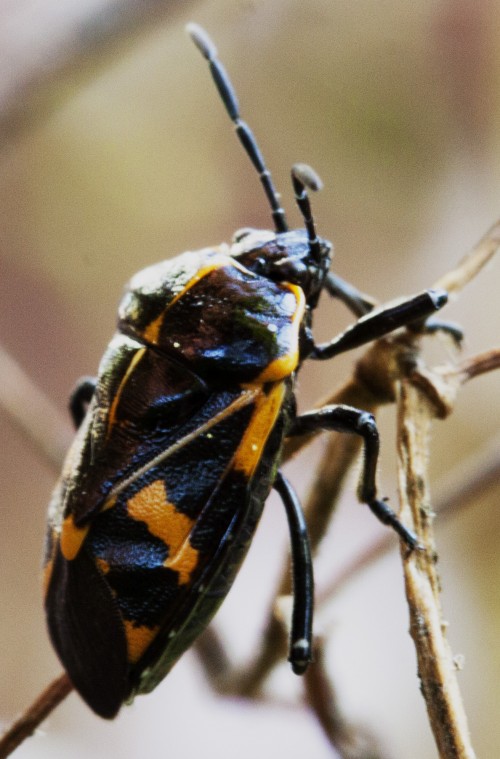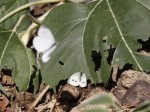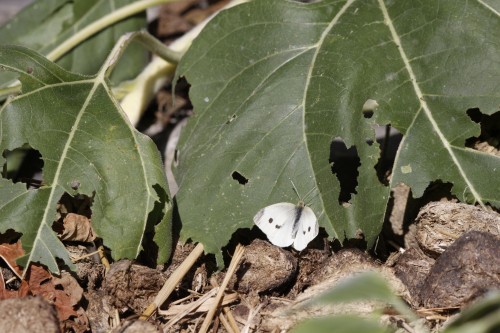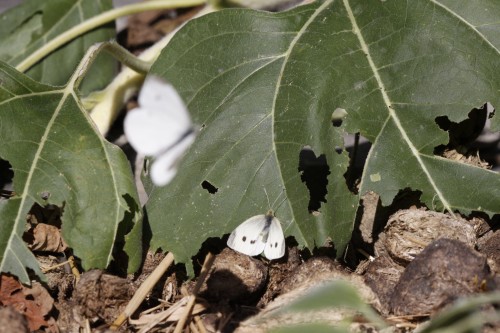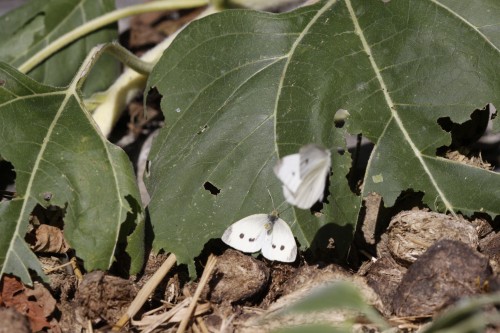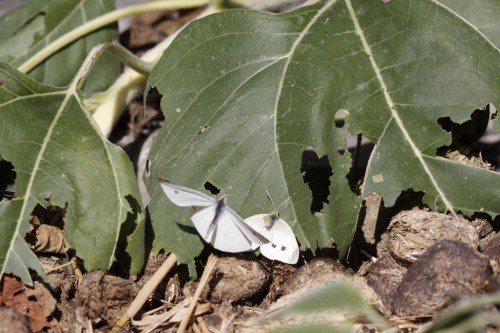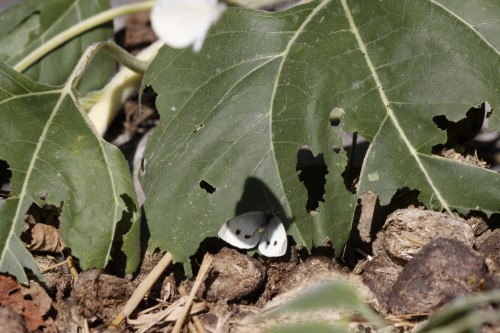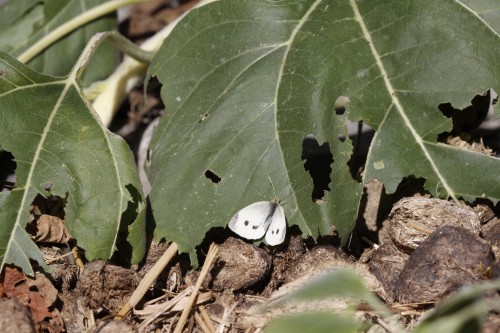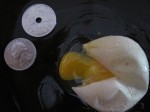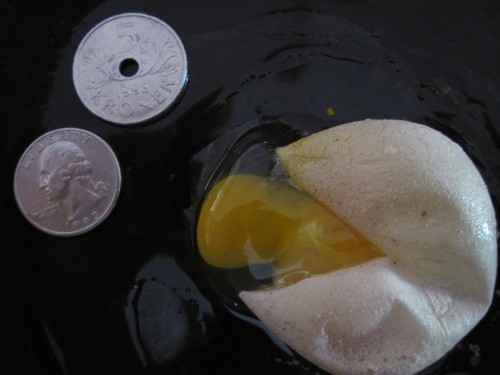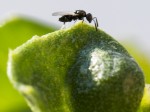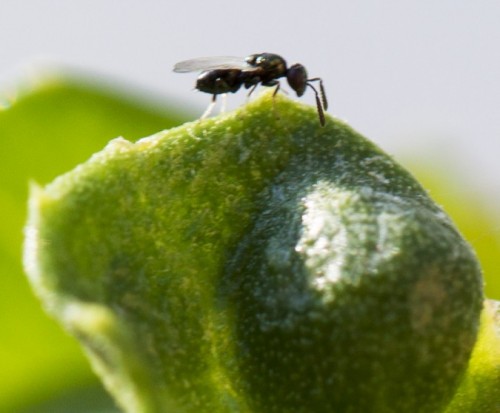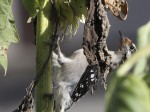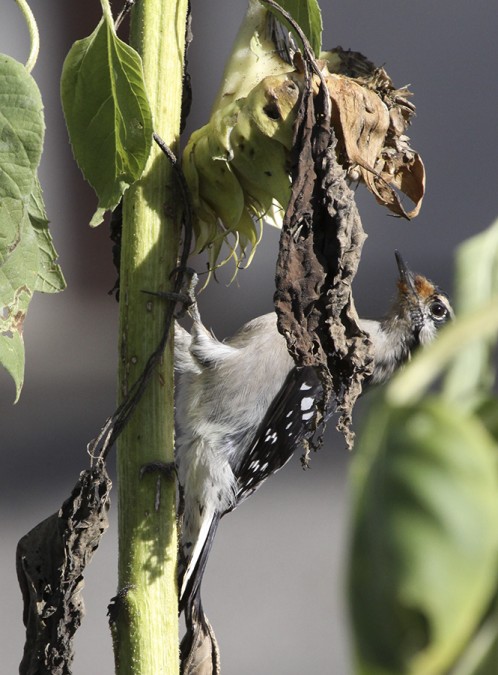 Two newly purchased healthy female kiwi vines — time to get you two out of your pots and in the ground. Best to plant now before the spring sun gets too strong, too hot. Recent rains have left the ground moist, and rainy season has just come to a close here in Northern California. Left: Actinidia deliciosa Vincent, female. Right: fuzzy kiwi Saanichton ( Actinidia deliciosa Saanichton), female.
Two newly purchased healthy female kiwi vines — time to get you two out of your pots and in the ground. Best to plant now before the spring sun gets too strong, too hot. Recent rains have left the ground moist, and rainy season has just come to a close here in Northern California. Left: Actinidia deliciosa Vincent, female. Right: fuzzy kiwi Saanichton ( Actinidia deliciosa Saanichton), female.
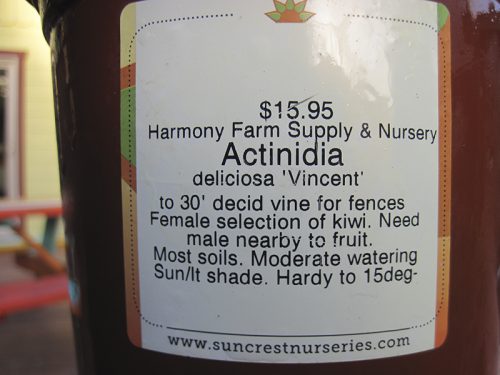 Both vines are in 1-gallon pots.
Both vines are in 1-gallon pots.
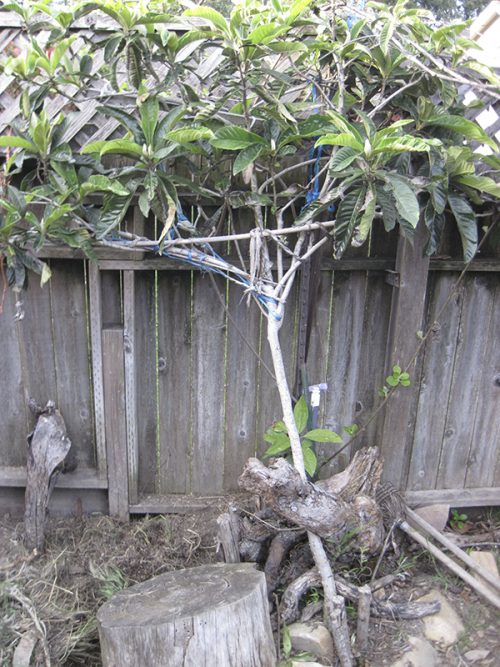 The BEFORE. A loquat tree is espalied along the back fence. Besides providing food, the evergreen tree provides fence line privacy. The tree is planted between our chicken coop (right, out of view) and the compost pile. Marmi, our 6-year-old Plymouth Bard Rock hen, would uproot the tree if not for the sticks, branches, and driftwood root burl protecting its crown. Note also the river rocks used to protect the tree’s roots. Most of the work planting the two kiwi vines will be to likewise protect their roots from the Marmi Scratching Machine. Note the young avocado tree behind the loquat’s trunk. Note also the vibrant kiwi climbing up into the loquat tree’s leaves; that vine is a Hardy kiwi, male, which was planted in 2008.
The BEFORE. A loquat tree is espalied along the back fence. Besides providing food, the evergreen tree provides fence line privacy. The tree is planted between our chicken coop (right, out of view) and the compost pile. Marmi, our 6-year-old Plymouth Bard Rock hen, would uproot the tree if not for the sticks, branches, and driftwood root burl protecting its crown. Note also the river rocks used to protect the tree’s roots. Most of the work planting the two kiwi vines will be to likewise protect their roots from the Marmi Scratching Machine. Note the young avocado tree behind the loquat’s trunk. Note also the vibrant kiwi climbing up into the loquat tree’s leaves; that vine is a Hardy kiwi, male, which was planted in 2008.
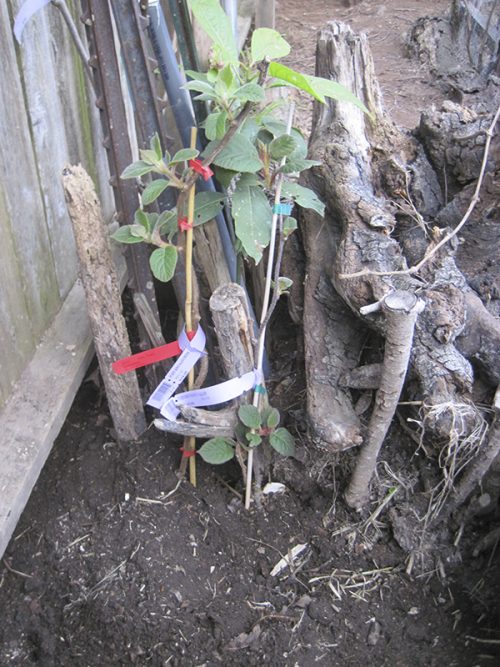 New vines in place, alongside avocado tree. Hardy male on other side of avocado tree, hidden from view. With the help of a pollinating insects the male’s pollen rich flowers will now have nearby female kiwi flowers to pollinate. What do you get when you cross avocado with kiwi? Only pollinators know.
New vines in place, alongside avocado tree. Hardy male on other side of avocado tree, hidden from view. With the help of a pollinating insects the male’s pollen rich flowers will now have nearby female kiwi flowers to pollinate. What do you get when you cross avocado with kiwi? Only pollinators know.
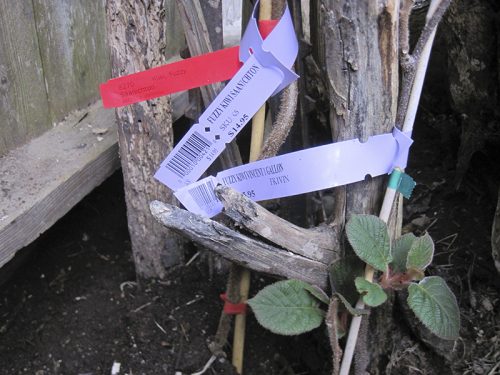 Saanichton left. Vincent right. Note the integrity of the planting wood — it’s old and rotten, decayed, on its way to becoming soil. The old wood is also pourous; it will serve as a moisture bank and provide food/shelter for garden critters. So among the 3 kiwi vines, avocado, and loquat tree AND all the miscellaneous wood material AND the rich soil, it’s a WILDLIFE HABITAT. And, much of that wildlife will be delicious treats for Marmi the chicken if she is lucky during her garden browsing. As shown in pics to come, Marmi will be held at bay so that she will not destroy the habitat nor uproot any of its plants.
Saanichton left. Vincent right. Note the integrity of the planting wood — it’s old and rotten, decayed, on its way to becoming soil. The old wood is also pourous; it will serve as a moisture bank and provide food/shelter for garden critters. So among the 3 kiwi vines, avocado, and loquat tree AND all the miscellaneous wood material AND the rich soil, it’s a WILDLIFE HABITAT. And, much of that wildlife will be delicious treats for Marmi the chicken if she is lucky during her garden browsing. As shown in pics to come, Marmi will be held at bay so that she will not destroy the habitat nor uproot any of its plants.
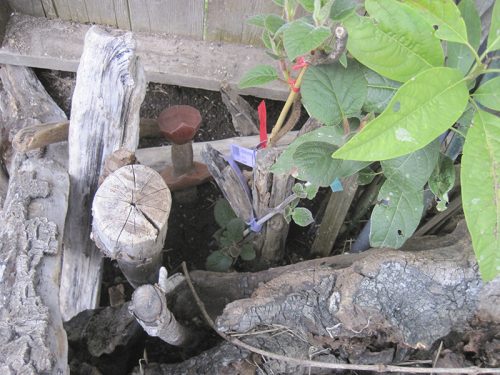 Front view, toward fence. Driftwood and wooden sword keep chicken feet away. About time I found a use for that wooden sword. Thanks Dave!
Front view, toward fence. Driftwood and wooden sword keep chicken feet away. About time I found a use for that wooden sword. Thanks Dave!
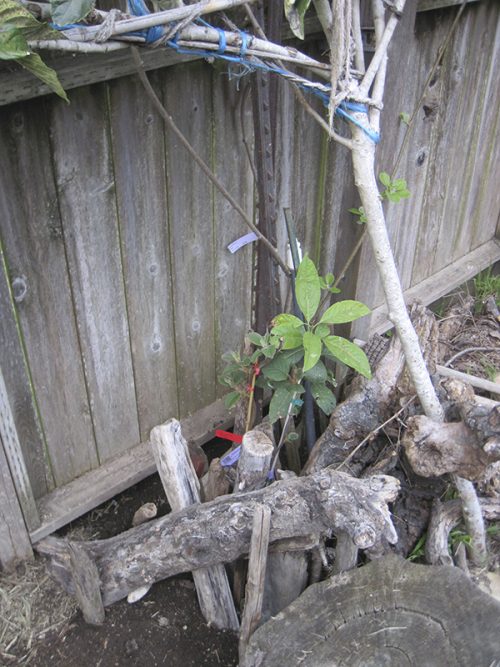 Almost enough obsticals to keep Marmi away from the vines; more to come.
Almost enough obsticals to keep Marmi away from the vines; more to come.
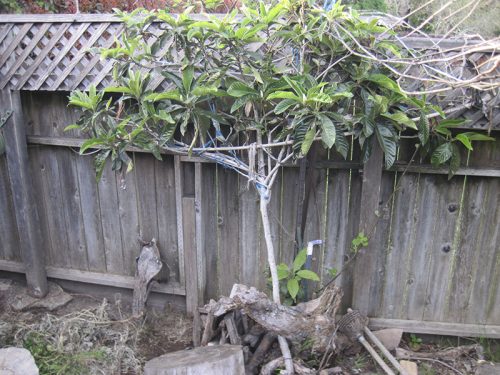 Tucked next to the fence and under the loquat tree, the southern exposure sun will be filtered to the young kiwi vines. Once the vines grow up to the fence latice, they will be more mature and better able to survive full exposure to our mild, light-frost winters and hot-sun summers.
Tucked next to the fence and under the loquat tree, the southern exposure sun will be filtered to the young kiwi vines. Once the vines grow up to the fence latice, they will be more mature and better able to survive full exposure to our mild, light-frost winters and hot-sun summers.
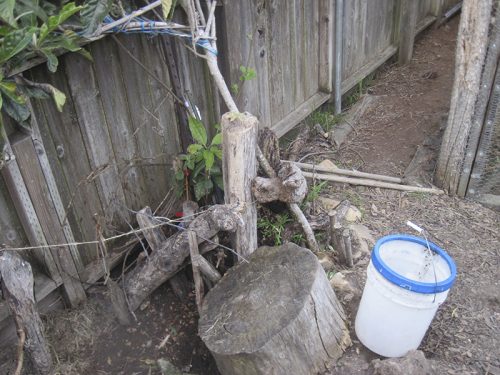 Marmi will love the new digs, complete with a metropolis of critters living in the caverns and crevices of the rotting wood barracade protecting the kiwi vines.
Marmi will love the new digs, complete with a metropolis of critters living in the caverns and crevices of the rotting wood barracade protecting the kiwi vines.
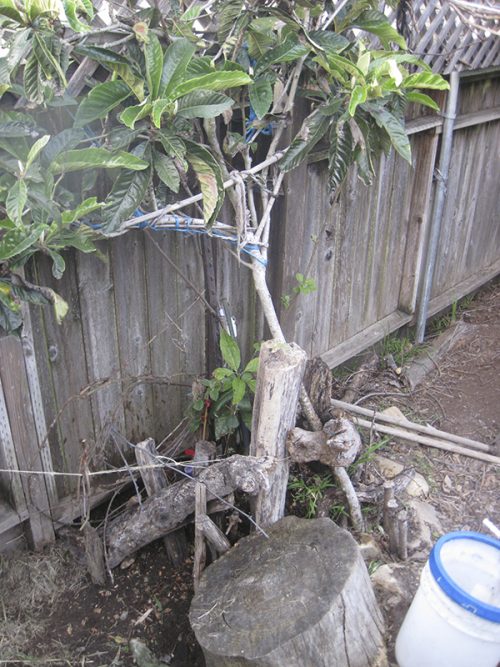 The AFTER. Hardy male climbs into loquat tree (leaffing vine right of the loquat tree. New kiwi vines, Vincent and Saanichton under the young avocado tree.
The AFTER. Hardy male climbs into loquat tree (leaffing vine right of the loquat tree. New kiwi vines, Vincent and Saanichton under the young avocado tree.
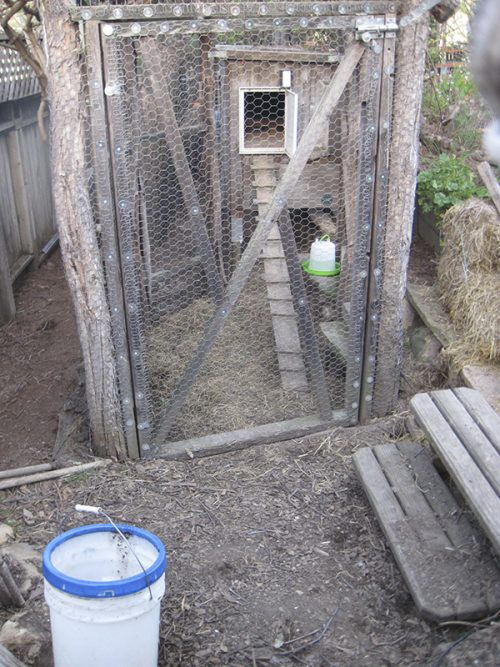 Chicken coop cleanings on their way — chicken poop (nitrogen) and decomposing rice straw (carbon). Yum! says the compost.
Chicken coop cleanings on their way — chicken poop (nitrogen) and decomposing rice straw (carbon). Yum! says the compost.
Enjoy your wildlife garden creations.
Tony

